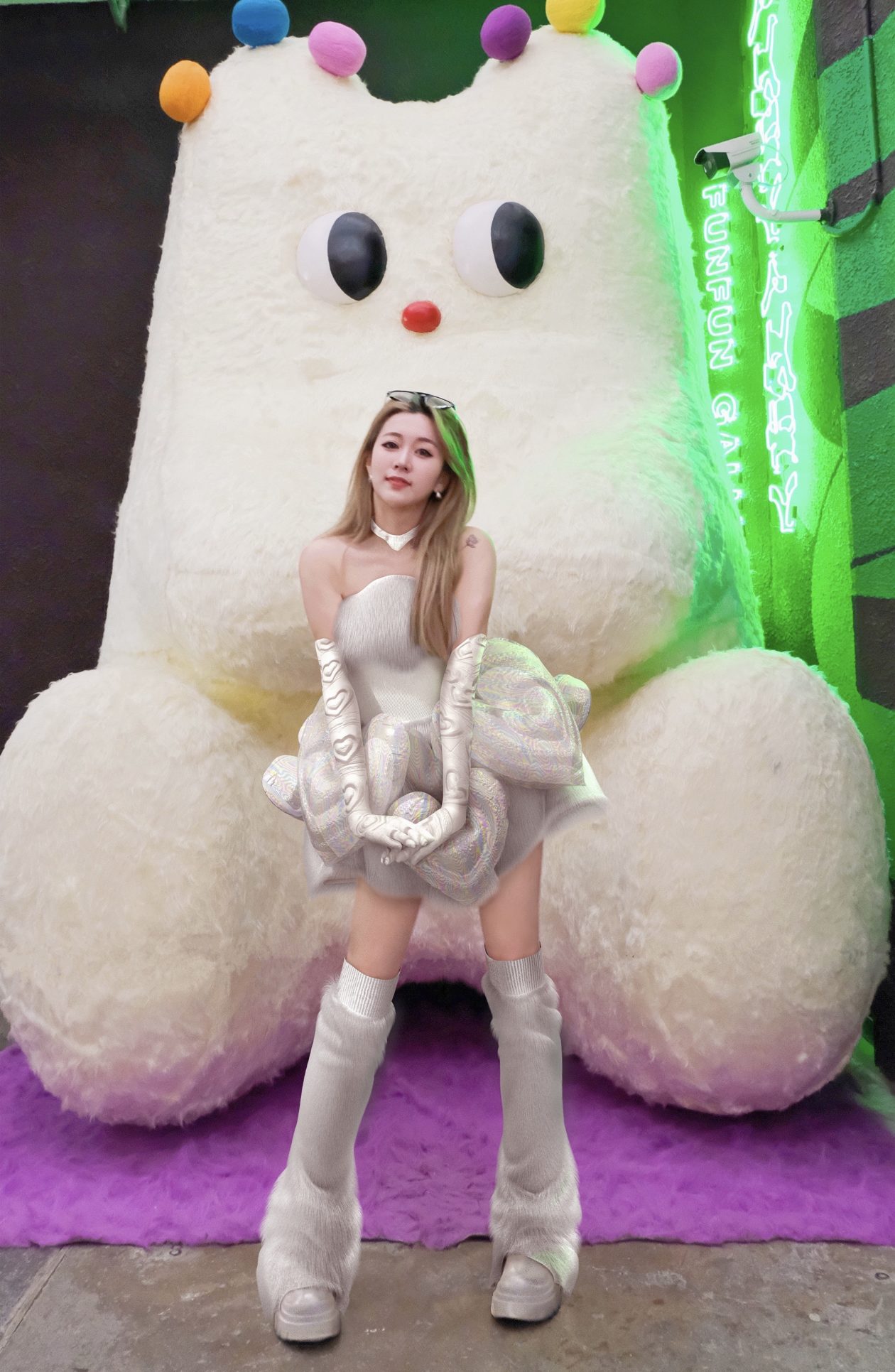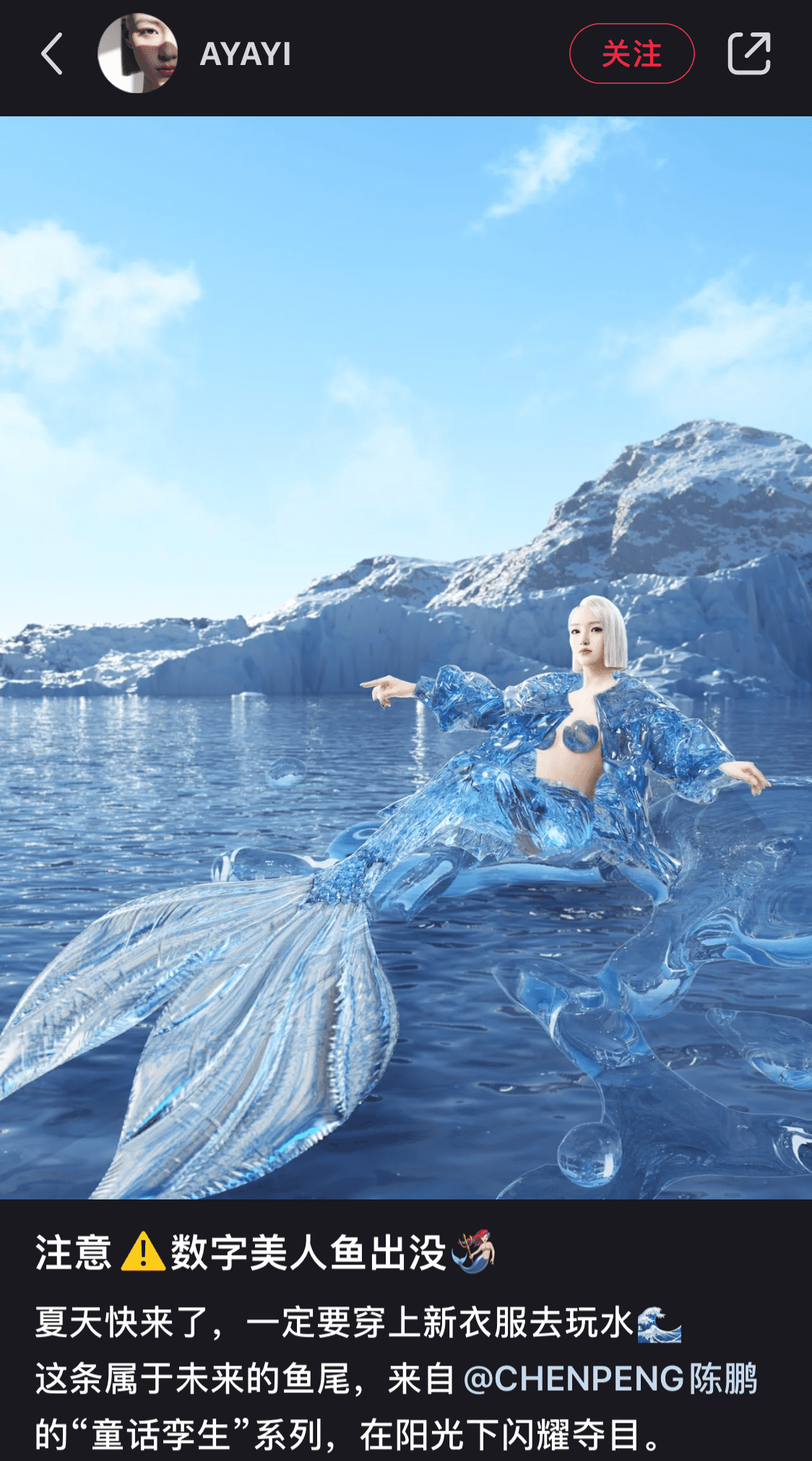China’s “Instagram” is entering virtual fashion with users who strut NFT clothes

China’s social media platform Xiaohongshu, or literally translated to “Little Red Book” in Mandarin, Middle Kingdom’s version of Instagram with over 148 million daily users, develops niche services for fashion bloggers who want to strut their stuff in virtual clothes based on NFTs. .

If that sounds complicated, here’s an idea of how it works – courtesy of video blogger Linersan (林 贰 三) who has 13,000 followers on Xiaohongshu and shared his experience buying and using virtual NFT outfits in a video.
First, these virtual garment NFTs debuted in April on “R-Space”, Xiaohongshus NFT Marketplace. Linersan says she bought the NFT for a virtual dress and sent it to a designer along with photos of herself.
“I have to send the designer the unique code for the virtual dress NFT, and then give a picture of myself that the designer uses to show me ‘wearing’ the dress,” she said in the video. The designer said that the image must have a high resolution and “just pose as if you are actually wearing it,” says Linersan.
Three days later, the pictures returned that showed her in the virtual silver-white dress with the title «Galaxy Heart». It cost 399 yuan for the picture (about $ 60). But additional copies cost 150 yuan each. The video received 20,000 likes, while her picture of wearing the dress received around 1,500 likes.
But according to Linersan’s video, NFT clothing has a short shelf life. At the end of the video, she says: “This also made me realize the truth – after taking pictures of wearing it for once, the life of the costume has been exhausted.”

These virtual costumes at Xiaohongshu start from 20 yuan (about $ 3) for a headdress, to a sci-fi themed dress for $ 5,000 (about $ 745). Virtual shoes, earrings, bags and even manicures are in R-Space’s shopping window.
Xiaohongshu seems to see business opportunities in NFT clothing and has been recruiting virtual fashion designers since May. It has been promoting new clothes on the NFT marketplace every Friday since June 10th.
NFT fashion blogger Jane Xu told Xiaohongshu that she has purchased 24 NFT articles on the site and published 13 posts with photos of herself wearing the virtual clothes.

Xu said that being a virtual fashion blogger is the same as a regular reviewer, which is to show off clothing brands and designs to trend-conscious consumers. The advantage of the NFT work is that there are no cluttered cabinets, and it is more environmentally friendly, she said. Like Linersan, she generally does not want to “wear” an NFT outfit for the second time once she has shown it on social media.
Xu currently has less than 1000 followers on Xiaohongshu, and most of her virtual fashion posts have less than 10 likes, but she said that the virtual NFT trend is just taking off and she wants to be part of the start.
“2022 will be the first year of China’s metaverse fashion,” she said, “it’s my hobby now, but if there is a chance, I would like to develop it into a career.”
Yanie Durocher, co-founder of POM POM, a Shanghai-based fashion brand marketing firm, also sees opportunities in NFT clothing fashion.
“Imagine your agenda – you are constantly on TikTok or any virtual world, it is actually a greater value to show your product to 500,000 people instead of on a physical evening with 20 people,” she said in a interview with Reject.
At least 136 virtual fashion designers have posted 298 items on Xiaohongshus NFT market as of this Monday, according to Rejectits estimates. CHENPENG Studio – founded by a designer by that name – is one of the pioneers.
The studio, which made five sets of costumes for the Winter Olympics in Beijing, started in April, characterized an NFT of a design for the winter and autumn season 2022 – a mermaid tail-shaped dress made of down material – and released it at Xiaohongshus virtual fashion collection.
“When I was involved in the design of the opening ceremony of the Winter Olympics in Beijing last winter, I already used 3D modeling tools to get a preliminary experience of digital fashion,” said Chen Peng Reject. “It can better express what our brand wants to convey,” he added.
“We have already started negotiating cooperation with various digital collection platforms in mainland China and abroad. One of our latest series is almost 90% complete. I think you will see it in the next 1-2 months.”
First step
Although this trend may slow down, it is still finding a way right now, and consumers are pushing for improved virtual NFT garments.
Linersan said in his video that the current metaverse costumes can only be “worn” on a still image, which is limiting and shows the beginning stage of the technology.

Other users on Xiaohongshu have criticized Chen Peng’s digital fashion efforts for poor graphic quality. The studio made NFT clothes for the virtual idol AYAYI and posted the picture on Xiaohongshu, but was criticized for what was called poor whole body reproduction.
Chen Bin, CEO of software maker Linctex for 3D clothing design, which has provided the 3D rendering service for Xiaohongshus’ virtual garment debut, said that virtual fashion is still at a very early stage. “The bottlenecks are computing power and clumsy AR / VR headsets.”
“We think the next turning point for virtual fashion will be 3-5 years later,” Chen said. can also be a way to solve these problems. “
Virtual fashion offers difficulties that need more solutions, said designer Chen Peng. For the current techniques, only when the person is standing, there may be better compositional results and visual effects.
Jane Xu argues that virtual fashion can be improved by shortening the time to “dress” the clothes, from the consumer’s point of view.
“What makes the consumer most satisfied is to use the newly purchased item immediately, not after a 3-7 day delay, so hopefully in the future we can find a smarter and more timely way to put on the virtual garments.”























